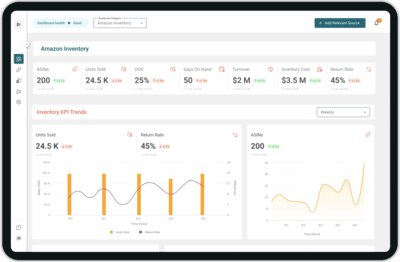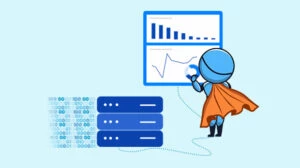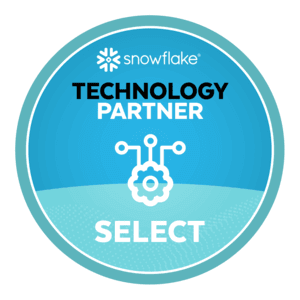Table of Contents
TogglePredictive analytics is the use of statistical techniques, machine learning algorithms, and other data analysis tools to identify patterns and relationships in historical data and use them to make predictions about future events. These predictions can be used to inform decision-making in a wide variety of areas, such as business, eCommerce, marketing, healthcare, and finance.
Different Techniques used in Predictive Analytics
- Linear and logistic regression: These are traditional statistical techniques used to model the relationship between one or more independent variables and a dependent variable.
- Decision trees and random forests: These are machine learning algorithms that create a model of decisions and their possible consequences.
- Neural networks and deep learning: These are advanced machine learning techniques that are inspired by the structure and function of the human brain.
- Time series analysis: This is a technique used to analyze data that varies over time and make predictions about future values of the time series.
Predictive analytics can be used for a wide range of tasks, such as:
- Customer segmentation: dividing customers into groups based on characteristics like demographics, behavior, and buying habits.
- Churn prediction: identifying which customers are likely to cancel a service or stop using a product.
- Fraud detection: identifying suspicious activity in financial transactions, insurance claims, and other areas.
- Risk assessment: evaluating the likelihood of a particular outcome, such as a loan default or a medical condition.
Predictive Analytics is used for Sales forecasting, Marketing Campaigns optimization, Supply Chain optimization, Inventory management and many more.
Predictive Modeling Techniques
Predictive modeling is the process of using statistical and machine learning techniques to build models that can make predictions or forecasts about future events or outcomes. There are a wide variety of predictive modeling techniques available, each with its own strengths and weaknesses, depending on the specific problem you are trying to solve and the characteristics of your data.
Here are Nine Common Techniques used in Predictive Modeling
- Linear regression: A technique that uses a linear equation to model the relationship between a dependent variable (the variable you are trying to predict) and one or more independent variables (variables that are used to make the prediction). Linear regression is a simple and interpretable technique that works well when the relationship between the variables is linear.
- Logistic regression: A variation of linear regression that is used when the dependent variable is binary (i.e. it can take on only two values) such as 0 and 1. It models the probability of the occurrence of an event.
- Decision Trees: A simple yet powerful technique that builds a tree-like model of decisions and their possible consequences. It works by recursively partitioning the data into smaller subsets based on the values of the input features and then building a prediction model for each subset.
- Random Forest: An ensemble technique that is built on decision trees and helps in reducing overfitting by averaging the results of multiple decision trees.
- Gradient Boosting: Another ensemble technique that combines multiple weak models such as decision trees to create a powerful ensemble model.
- Support Vector Machines (SVMs): A technique that can be used for both classification and regression tasks. It works by finding the best boundary (or hyperplane) that separates the data into different classes or predicts a continuous variable.
- Neural Networks: A technique inspired by the structure and function of the human brain, which can be used for both supervised and unsupervised learning tasks. They can be applied to a wide variety of problems and can be used in conjunction with other techniques.
- k-Nearest Neighbors (k-NN): a simple and powerful algorithm for classification and regression tasks where the prediction is based on the majority vote or average of the k-nearest neighbors.
- Time Series Analysis techniques: Some examples are Exponential Smoothing, ARIMA, Seasonal Decomposition of Time Series, GARCH etc.
It’s important to note that selecting the appropriate technique depends on the nature of the problem, data characteristics and its availability, computational resources and expected accuracy and interpretability of the model.
| Predictive Analytics/ML Technique | Suitable Industries |
| Decision Trees/Random Forest | Marketing, eCommerce, Advertising, Banking |
| Logistic Regression | Marketing, eCommerce, Advertising, Healthcare, Banking |
| K-means Clustering | Marketing, eCommerce, Banking |
| Neural Networks | Ecommerce, Advertising, Healthcare, Manufacturing |
| Support Vector Machines (SVMs) | Marketing, eCommerce, Advertising, Public Safety |
| Time Series Analysis | Marketing, eCommerce, Advertising, Healthcare, Banking |
| Anomaly detection | eCommerce, Manufacturing, Banking, Healthcare |
It’s worth noting that this table is not exhaustive and other techniques exist, it also depends on the characteristics of data and the problem you’re trying to solve. In many cases, a combination of techniques is used to achieve the best results.
You should also consider that this table is a generalization and not a rule, there is no one-size-fits-all approach and the best model can vary based on the context, data and the problem you are trying to solve.
For example, let’s see three use-cases of predictive modeling in marketing and ecommerce industry.
Customer Segmentation
This is the process of dividing customers into groups based on certain characteristics, such as demographics, behavior, and buying habits. By segmenting customers, businesses can tailor their marketing efforts to the specific needs and preferences of different groups.
For example, a company that sells clothing might segment its customers by age, gender, and income level, and then target its advertising and promotions to each segment accordingly. Predictive modeling can be used to analyze historical customer data and identify patterns that can be used to create segments, as well as to predict which customers are likely to respond to different marketing efforts.
Also, read:
Predictive Customer Lifetime Value (CLV)
CLV is a prediction of the total value a customer will bring to a business over their lifetime as a customer. By predicting CLV, businesses can identify their most valuable customers and focus their marketing efforts on retaining and growing these customers.
Predictive modeling can be used to analyze historical customer data, such as purchase history and engagement, to identify patterns that are associated with high CLV. The model can then use this information to predict the CLV of new customers and identify those that are most likely to be high value.
Predictive Product Recommendation Systems
These systems use data mining, machine learning and predictive analytics to suggest products to customers, in order to increase sales and customer engagement. These systems are widely used in eCommerce, it’s based on customer browsing history, purchase history, and other data to identify patterns and make personalized product recommendations.
Predictive modeling can be used to analyze the historical data of a customer and the historical data of other similar customer to make more accurate and useful product recommendations.
Machine Learning for Predictive Analytics
Machine learning (ML) is a powerful tool for predictive analytics, as it allows computers to learn from data and make predictions about future events.
Four types of ML algorithms that can be used for predictive analytics:
- Supervised Learning: This is the most common type of machine learning, and is used when the outcome variable (i.e., the variable that you’re trying to predict) is numerical or categorical. Examples of supervised learning algorithms include linear regression, logistic regression, and decision trees.
- Unsupervised Learning: In unsupervised learning, the algorithm is not given any labeled data, and must find patterns and structure in the data on its own. Examples of unsupervised learning algorithms include k-means clustering and principal component analysis.
- Reinforcement Learning: In reinforcement learning, an agent learns to make decisions by interacting with its environment and receiving feedback in the form of rewards or penalties.
- Deep Learning : a subset of machine learning that uses artificial neural networks with multiple layers, which are able to learn and represent data with a high level of abstraction.
It’s also worth noting that a lot of predictive analytics projects use a combination of these different algorithms.
To apply ML for predictive analytics, the first step is usually to collect and pre-process the data, then split it into a training set and a test set. The algorithm is then trained on the training set, and its performance is evaluated on the test set. Once the algorithm has been trained and validated, it can be used to make predictions on new, unseen data.
It is important to know that ML model also require a good understanding of data, so good practices like data exploration, feature engineering and proper validation is crucial for a successful predictive analytics project.
It’s also worth noting that a lot of predictive analytics projects use a combination of these different algorithms.
To apply ML for predictive analytics, the first step is usually to collect and pre-process the data, then split it into a training set and a test set. The algorithm is then trained on the training set, and its performance is evaluated on the test set. Once the algorithm has been trained and validated, it can be used to make predictions on new, unseen data.
It is important to know that ML model also require a good understanding of data, so good practices like data exploration, feature engineering and proper validation is crucial for a successful predictive analytics project.
Neural Networks for Customer Behavior Analysis
Neural networks are a powerful type of machine learning algorithm that can be used for customer behavior analysis. They are particularly well-suited for this task because they are able to learn complex relationships between inputs and outputs, and can handle large amounts of data. For customer behavior analysis, neural networks can be used to predict customers’ likelihood of making a purchase, or to classify customers into different segments based on their behavior.
One common type of neural network that is used for customer behavior analysis is the feedforward neural network, which has an input layer, one or more hidden layers, and an output layer. The input layer receives the customer’s behavioral data, such as their past purchases and browsing history. The hidden layers process the data and extract features, and the output layer produces a prediction or a classification.
Support Vector Machines to Predict Customer Churn
Support Vector Machines (SVMs) are another type of machine learning algorithm that can be used for customer churn prediction. SVMs are a type of supervised learning algorithm that is used for classification problems. They work by finding the hyperplane that maximally separates the data into different classes. In the context of customer churn prediction, the goal is to find the hyperplane that separates customers who are likely to churn from those who are not.
SVMs are particularly well-suited for this task because they are able to handle high-dimensional data, and can find the best boundary even when the data is not linearly separable. However, this algorithm may not perform as well when it comes to large dataset and datasets with high noise.
Predictive Analytics in Different Industries
- Marketing: Predictive analytics is widely used in marketing to understand customer behavior, predict customer response to different marketing campaigns, and identify high-value customer segments. Marketers use predictive analytics to identify patterns in customer data, such as purchase history and web browsing behavior, to better target their marketing campaigns. For example, a company might use predictive analytics to identify customers who are likely to purchase a new product, and then target those customers with an email marketing campaign.
- Ecommerce: Predictive analytics plays a big role in ecommerce by predicting customer behavior, identifying customer needs and preferences, and personalizing customer experience. Predictive models can be used to predict customer churn, identify potential customers, and recommend products or services based on a customer’s browsing history and purchase history. Also, Predictive analytics can help eCommerce businesses to identify the best pricing strategy for different products and optimize the inventory management.
- Advertising: In the advertising industry, predictive analytics can be used to analyze website traffic data to understand which types of ads are most effective, how to target specific demographics, and what content will be most engaging to users. Predictive models can also be used to predict which customers are most likely to click on ads, and then target those users with more ads.
- Healthcare: Predictive models can be used to identify patients at high risk of certain diseases, predict patient outcomes, and optimize treatment plans.
- Banking: Predictive analytics can be used to identify potential fraud, assess credit risk, and identify customers who are most likely to respond to different marketing campaigns.
- Insurance: Predictive models can be used to analyze claims data, identify fraud, and predict customer lifetime value and customer retention.
- Manufacturing: Predictive models can be used to optimize production processes, reduce downtime, and predict equipment failure.
- Public safety: Predictive models can be used to identify crime hotspots and predict crime patterns.
- Sports: Predictive models can be used to analyze data from previous games and performances to identify patterns and predict future outcomes.
These are just a few examples of how predictive analytics can be applied in various industries, but the possibilities are endless, as predictive modeling can be applied in many fields and organizations.
Also, read:
Time Series Analysis
Time series analysis is the process of using statistical methods to model and explain a time-dependent series of data points. It is a widely used technique in fields such as economics, finance, social science, and engineering. The goal of time series analysis is often to make forecasts or predictions about future values of the series, or to identify any underlying patterns or trends in the data.
Six techniques that are commonly used in time series analysis:
- Moving averages: A moving average is a method for smoothing out a time series by taking the average of a set of consecutive data points. This can be useful for removing noise or irregular fluctuations from the data.
- Exponential smoothing: A method for forecasting a time series that assigns exponentially decreasing weights to past observations.
- ARIMA: (Autoregressive Integrated Moving Average) model, it is a statistical model that can be used to analyze, forecast and understand the components of a time series.
- Seasonal Decomposition of Time series: is a mathematical technique that separates a time series into its trend, seasonal, and residual components.
- Fourier transform : a method of transforming time-domain data into frequency domain, it’s widely used in signal processing to obtain the frequencies of different periodic signals present in the time series.
- Machine Learning : where the prediction is done with the help of supervised or unsupervised learning algorithms.
It is important to note that, selecting the appropriate technique(s) for a given dataset depends on the nature of data and its properties like stationarity, trend, seasonality etc.
Let’s look at few examples in application of time series analysis in marketing and eCommerce:
- ARIMA for forecasting sales
- GARCH for measuring volatility in customer behavior
- State Space Models for customer journey analysis
- Other Time Series Analysis Techniques for marketing
ARIMA for Forecasting Sales
ARIMA (Auto-Regressive Integrated Moving Average) is a popular time series analysis technique that can be used for forecasting sales in marketing and eCommerce. ARIMA models capture the dynamics of the data by combining past values with moving averages and differences of past values. This technique can be used to forecast sales trends, predict future demand, and identify patterns in sales data.
GARCH for Measuring Volatility in Customer Behavior
GARCH (Generalized Autoregressive Conditional Heteroskedasticity) is a time series analysis technique that can be used to measure volatility in customer behavior in marketing and ecommerce. GARCH models capture the volatility of the data by modeling the variance of the errors as a function of past errors. This can be useful for understanding how customer behavior changes over time, and for making better predictions about future customer behavior.
State Space Models for Customer Journey Analysis
State Space Models: State-space models are a class of time series analysis techniques which include Kalman Filters, that allow modeling of the underlying system dynamics, they also can be used for customer journey analysis in marketing and ecommerce. They can be used to model the progression of a customer through different stages of the customer journey, such as browsing, purchase, retention, and churn. These models can help to identify key factors that influence customer behavior and predict future customer behavior.
Other Time Series Analysis Techniques
- Exponential smoothing: a forecasting technique that is used to predict the future value of a variable by taking into account its past values and the rate at which it is changing over time.
- Holt-Winters method: It’s an extension of exponential smoothing that takes into account the trend of the data and the seasonal component.
- ARIMAX and VARIMAX: These are variations of ARIMA that can handle time series with exogenous variables which means that the time series of interest is influenced by other variables.
- Seasonal Decomposition of Time series (STL) : a technique that decomposes a time series into its seasonal, trend, and irregular components.
These are just a few examples of time series analysis techniques that can be used in marketing and ecommerce. The specific technique or combination of techniques used will depend on the characteristics of the data and the problem being solved.
Predictive Maintenance
Predictive maintenance is a technique that uses data and machine learning algorithms to predict when equipment or systems will need maintenance, and to schedule maintenance at the optimal time. It can be applied to many different types of systems, and is particularly useful for critical systems that are expensive to maintain or replace.
Applications in Inventory Management
Predictive maintenance can be used to optimize inventory levels by predicting when certain products are likely to run out of stock, and triggering restocking orders in advance. This can help to reduce stockouts and ensure that popular products are always in stock. Additionally, it can be used to predict the lifespan of equipment or devices used in the warehouse and triggers maintenance schedules before breakdowns occur to ensure smooth functioning of warehouse operations.
Applications in Logistics and Supply Chain
Predictive maintenance can be used to optimize logistics and supply chain operations by predicting when transportation vehicles or other equipment are likely to require maintenance, and scheduling maintenance in advance. This can help to reduce downtime and ensure that goods are delivered on time. It can also be used to predict the performance of different routes and carriers, which can be used to optimize the logistics of goods delivery.
Applications in Website Optimization
Predictive maintenance can also be used to optimize the performance of eCommerce websites by predicting when certain elements of the website are likely to fail, and scheduling maintenance in advance. This can help to reduce downtime and improve the customer experience by ensuring that the website is always available and running smoothly. Predictive Maintenance models can also be used to predict how different changes to website design or functionality will affect customer behavior, which can be used to make data-driven decisions about website optimization.
Applications in Manufacturing
Predictive maintenance can be particularly useful in manufacturing environments, where equipment downtime can be costly and disruptive. By predicting when equipment is likely to fail, manufacturers can schedule maintenance in advance and reduce downtime. Additionally, predictive maintenance can be used to optimize the performance of manufacturing processes by predicting when certain process parameters are likely to deviate from their normal range, and triggering corrective actions in advance. Predictive Maintenance can also be used to predict the equipment lifespan, schedule the maintenance proactively and help to plan spare parts inventory.
Applications in Aviation
Predictive maintenance can be used to optimize the performance of aircrafts and other aviation equipment. By predicting when certain components are likely to fail, airlines can schedule maintenance in advance and reduce downtime. This can help to improve the reliability and safety of flights, as well as reduce the costs associated with maintenance and repairs. Predictive Maintenance can also be used to predict the performance of the aircrafts and predict the optimal time for maintenance or replacements of certain parts.
Applications in Energy Sector
Predictive maintenance can be used to optimize the performance of power generation and distribution equipment such as turbines, generators, and transmission lines. By predicting when certain components are likely to fail, energy companies can schedule maintenance in advance and reduce downtime. This can help to improve the reliability and efficiency of energy systems, as well as reduce the costs associated with maintenance and repairs. Predictive Maintenance can also be used to predict the energy demand and production patterns and schedule the maintenance proactively.
It is worth noting that, Predictive maintenance can be considered as a part of Industry 4.0 or smart manufacturing and Internet of Things (IoT) systems where the data generated by the machines and devices is analyzed in real-time to predict the equipment failure and schedule the maintenance proactively.
Predictive Analytics and Big Data
Big data refers to the large and complex datasets that are generated by businesses, governments, and other organizations. Predictive analytics and big data can be used to gain insights, make predictions and take action to improve business outcomes, by providing more accurate predictions and decision-making.
One of the key advantages of using big data for predictive analytics is that it allows for the analysis of more data points, which in turn can improve the accuracy of predictions. With big data, organizations can process vast amounts of data from multiple sources and gain a more complete understanding of their customers, products, and operations.
Big data technologies such as Hadoop and Spark allow for the storage, processing and analysis of large datasets in a distributed computing environment, enabling faster and more efficient data processing. It also allows the use of advanced machine learning algorithms that can handle large datasets, such as deep learning and reinforcement learning.
As we noted earlier, Predictive analytics can be used in many different industries, including:
- Retail: Predictive analytics can be used to analyze customer behavior and make personalized recommendations, optimize prices and inventory levels, predict demand and identify new market opportunities.
- Finance: Predictive analytics can be used to detect fraud, optimize portfolio management, predict credit risks and develop customized financial products.
- Healthcare: Predictive analytics can be used to improve patient outcomes by identifying those at risk of a particular condition, predicting treatment response, and identifying potential hospital readmissions.
- Manufacturing: Predictive analytics can be used to optimize supply chain and logistics operations, predict equipment failures, and identify new revenue opportunities.
- Telecommunication: Predictive analytics can be used to optimize network capacity, predict customer churn and identify new revenue opportunities.
Integration with Spark and Hadoop for Data Processing
Apache Spark and Apache Hadoop are both open-source big data technologies that can be integrated with predictive analytics to enable the processing and analysis of large and complex datasets.
Hadoop is a distributed file system that allows for the storage and processing of large datasets across a cluster of commodity hardware. It provides a framework for processing big data using a variety of tools, such as Apache Pig and Apache Hive, which are designed to work with Hadoop’s distributed file system. Hadoop also provides the ability to integrate with other data storage and processing systems such as NoSQL databases, and it can be used to store, process and analyze the data in batch mode.
Spark, on the other hand, is a fast and general-purpose big data processing engine. It provides a higher-level API for data processing and analysis, which allows developers to write applications that can process large datasets quickly. Spark also has built-in libraries for Machine learning, Graph processing, SQL and streaming which can be used to perform data processing and analysis in a distributed computing environment.
The two systems can be integrated together in a way that Hadoop can be used for storing and managing the large dataset, and then use Spark on top of it for processing and analyzing the data. The integration of these technologies allows Spark to process and analyze data stored in HDFS (Hadoop Distributed File System), and it can also take advantage of Hadoop’s data processing capabilities, such as data partitioning and load balancing.
One way of integrating Spark and Hadoop is through the use of Hadoop’s YARN (Yet Another Resource Negotiator) which is a cluster manager that allows Spark and Hadoop to share the same cluster and resources, so that Spark can access the data stored in HDFS.
There are also other options available such as using Spark libraries like SparkSQL and Dataframes to read data from Hive or Hbase which are data storage and querying component of Hadoop ecosystem.
Spark and Hadoop both have their own strengths and weaknesses, and depending on the specific use case and the characteristics of the data, it may be more appropriate to use one or the other, or a combination of the two.
Integration with other Big Data Platforms
In addition to Apache Spark and Apache Hadoop, there are several other big data platforms that can be integrated with predictive analytics to gain insights.
- Apache Kafka: It is a distributed streaming platform that can be used to ingest and process large volumes of data in real-time. It can be integrated with Spark and Hadoop for real-time data processing and analysis.
- Apache Cassandra: It is a NoSQL database that is designed to handle large amounts of data across many commodity servers. It can be integrated with Spark and Hadoop to enable fast, real time analysis of data.
- Apache Storm: It is a distributed, real-time data processing system that can be used to analyze data in real-time. It can be integrated with Spark and Hadoop for real-time data processing.
- Apache Flink: It is an open-source, big data processing framework that can be used for both batch and real-time data processing. It can be integrated with Spark and Hadoop for real-time data processing.
- Graph Database: it is a specialized database that can be used to model and analyze data in a graph format, this can be particularly useful in customer analysis to identify patterns, relationships and hidden insights, Neo4j and OrientDB are few examples of open-source graph databases.
- Elasticsearch: It is a search engine that can be used to index, search and analyze large amounts of data in real-time. It can be integrated with Spark and Hadoop for real-time data processing.
- Apache Nifi: is a data integration tool that can be used to collect and move the data from various sources and make it available for analysis, it can be integrated with Spark and Hadoop for data processing and analysis.
In case of Retail/eCommerce industry, these big data platforms can be integrated with predictive analytics to enable customer analysis and gain insights, by processing and analyzing large amounts of customer data in real-time. By leveraging the power of these platforms, organizations can gain a more complete understanding of their customers, improve customer segmentation and targeting, and develop more effective marketing strategies.
12 Tips to Implement Predictive Analytics
Predictive modeling is a powerful tool that can help businesses make better decisions by identifying patterns and trends in their data. However, building a successful predictive model requires a solid understanding of the data and the business problem you’re trying to solve, as well as a good amount of data and computational resources.
Here are 12 practical tips and best practices to keep in mind when building predictive models for businesses:
- Understand the business problem: Before you start building a predictive model, it’s important to have a clear understanding of the problem you’re trying to solve. Identify the key metrics and objectives, and define the target variable you want to predict. This will help you select the appropriate algorithms and techniques for your model.
- Start small: It’s best to start with a small project to test the waters. This will help you gain experience and learn what works and what doesn’t before scaling up.
- Foster a data-driven culture: Encourage employees to think in terms of data and to use data to inform decision-making. A data-driven culture will help ensure that predictive analytics is effectively integrated into your organization.
- Gather and clean the data: Having a good quality dataset is essential for building a successful predictive model. Gather as much relevant data as possible and clean it thoroughly to remove any inaccuracies or inconsistencies. This step can be time-consuming, but it’s worth the effort to ensure that your model is based on accurate data.
- Exploratory data analysis: Conduct an exploratory data analysis to get a better understanding of the data, identify patterns, and spot any potential issues. This will help you select the appropriate features and determine which algorithms and techniques are best suited for your problem.
- Split data into train and test set: When you build the model it is very important that you split the data into two sets. One set will be used to train the model (Train set) and the other set will be used to evaluate the performance of the model (Test set).
- Try different algorithms and techniques: There are many different algorithms and techniques that can be used for predictive modeling, such as linear regression, logistic regression, decision trees, random forests, and neural networks. Try different algorithms and techniques to see which one works best for your problem.
- Monitor model’s performance: Once you have a working model, monitor its performance over time. Make sure to track the key metrics you identified earlier and compare them to your original objectives. This will allow you to identify any issues and make adjustments as needed.
- Address business’s lack of data: If a business lacks data and data foundation, there are different ways to address it. You could get external data from public data sources. You could also use synthetic data generation techniques. Another approach could be to collect more data through surveys, experiments or by involving third-party data providers.
- Communicate results effectively: Finally, it’s important to communicate the results of your predictive model to the stakeholders in the business in an effective way. This can be done through visualizations, reports, or presentations, and it should include an explanation of the model’s performance, limitations, and potential next steps.
- Invest in the right tools and resources: Invest in the tools and resources necessary to implement predictive analytics, such as data visualization software, machine learning libraries, and computational resources.
- Be ethical: Be aware of ethical considerations when working with data, such as ensuring privacy and security, and take steps to protect data and prevent misuse.
Also, read:
Overall, the key to success in building predictive models for businesses is to have a solid understanding of the business problem you’re trying to solve and to work with a high-quality dataset. By following these tips and best practices, you can build models that are more accurate and useful for decision-making.
Conclusion
In conclusion, predictive analytics has the potential to revolutionize the way that businesses operate. However, many businesses may not have the necessary capabilities, data foundation, or team to fully utilize this powerful technology. This is where Saras Analytics‘ managed data operation and growth analytics service comes in. With a proven track record of helping hundreds of brands make the most of their data, Saras Analytics can serve as a valuable partner for any eCommerce or retail brand looking to take their data-driven decisions to the next level.
Don’t let a lack of data capabilities hold your business back. Contact Saras Analytics today and find out how our managed data service can help you unlock the full potential of your data and drive growth for your business.
- What is predictive analytics?Predictive analytics is the use of statistical techniques, machine learning algorithms, and other data analysis tools to identify patterns and relationships in historical data and use them to make predictions about future events. These predictions can be used to inform decision-making in a wide variety of areas, such as business, eCommerce, marketing, healthcare, and finance.
- What are some predictive modeling techniques?There are a broad variety of predictive modeling techniques available, each with its own strengths and weaknesses, counting on the specific problem you are seeking to solve and the attributes of your data. Some common predictive modeling techniques include linear and logistic regression, decision trees and random forests, neural networks, support vector machines, and time series analysis. These techniques can be used to model different types of outcomes, such as customer behavior, sales forecasting, product recommendation, churn prediction, and more. It is important to notice that choosing the suitable technique rests on the nature of the problem, data attributes and availability, computational resources, and expected accuracy and interpretability of the model.
- What are some applications of predictive analytics in different industries?Predictive analytics can be applied in many industries to optimize performance, reduce costs, improve customer satisfaction, and increase revenue. Some examples are: - eCommerce: Predictive analytics can help eCommerce businesses segment customers, personalize product recommendations, forecast demand, optimize pricing, and prevent fraud. - Healthcare: Predictive analytics can help healthcare providers diagnose diseases, predict outcomes, prevent readmissions, optimize treatment plans, and improve patient care. - Finance: Predictive analytics can help financial institutions assess credit risk, detect fraud, optimize portfolio allocation, and enhance customer loyalty. - Marketing: Predictive analytics can help marketers understand customer behavior, predict customer response to different marketing campaigns, and identify high-value customer segments. - Advertising: Predictive analytics can help advertisers analyze website traffic data to understand which types of ads are most effective, how to target specific demographics, and what content will be most engaging to users. These are some examples of how predictive analytics can be used in different industries, but the possibilities are boundless, as predictive modeling can be applied in countless fields and organizations.
- How can predictive analytics integrate with big data platforms?Predictive analytics can leverage big data platforms to process large volumes of structured and unstructured data from various sources. Some popular big data platforms that can integrate with predictive analytics are Spark and Hadoop, which provide distributed computing frameworks for data processing. Other big data platforms include Google Cloud Platform, Amazon Web Services, Microsoft Azure, and more.
- What are some tips to implement predictive analytics successfully?Some tips to implement predictive analytics successfully are: - Define a clear business problem and objective - Collect relevant and quality data - Choose appropriate predictive modeling techniques - Validate and test the model - Deploy and monitor the model - Communicate and act on the results - Conduct an exploratory data analysis to get a better understanding of the data - Invest in the tools and resources necessary to implement predictive analytics By following these tips, you can create models that are more accurate and useful for decision-making.
















